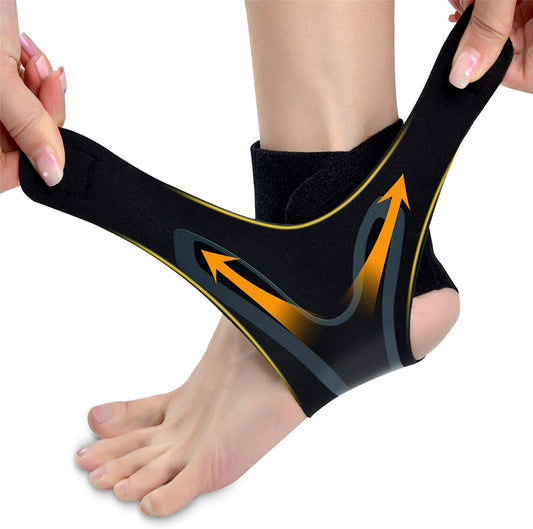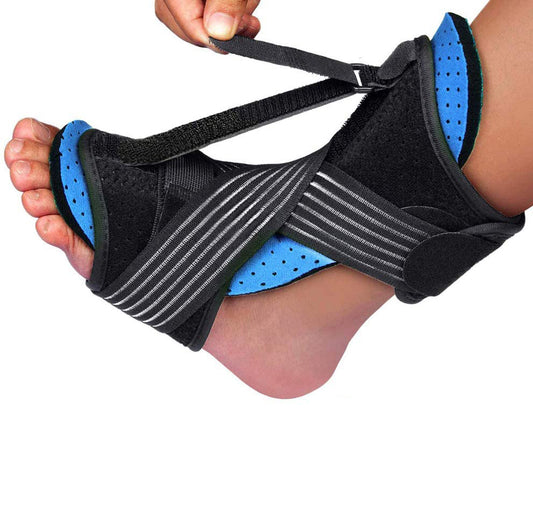When to use an ankle brace
Back in the early 1990s, ankle braces began to appear more frequently on sports fields and sports fields, due to improved designs and less expensive than duct tape tying an athlete's ankle. Ankle braces are ubiquitous today and come in many different designs, even sport-specific, to provide extra support after an injury or to prevent ankle sprains in the first place.
Using ankle braces to prevent ankle injuries is becoming more common, and coaches, parents, and athletes often ask me if it's worth wearing an ankle brace. Current research suggests that the use of ankle braces in high school-age athletes reduces the incidence, but not severity, of acute ankle injuries. Ankle braces are not shown to reduce the severity of ankle, knee, or other lower extremity injuries.
Ankle ligaments, muscle and tendon units, and ankle bones create internal support to keep the ankle secure. These internal supports are a vital link from your feet all the way to your hips for optimal performance. Ankle braces act as external support to limit certain movements, such as plantar flexion/varus (motion at the ankle joint that brings the foot down away from the leg and turns the foot inward), and gives you an idea of where the ankle joint is in space. For maximum effect, the ankle brace should fit comfortably in the shoes you wear during the activity, which also helps with compliance with the brace.
Four benefits of using an ankle brace for sprains
Ankle braces can help reduce swelling
what does this do
Reducing swelling removes pressure from the foot and ankle, avoiding further damage and providing short-term pain relief. It also helps determine the severity of the sprain.
How to do it
For the first 24 to 48 hours, rest, ice, compression, and elevation of the ankle will help reduce swelling. Crutches, supportive ankle braces for sprains, and compression wraps will also help reduce the load on the injured ankle.
how long will this take
It depends on the severity of the injury. For grade 1 sprains, the swelling will subside in 2-4 days, and for grade 2 sprains, the swelling will subside in 1-2 weeks. Swelling in a grade 3 sprain will last 2-3 weeks. These times can be shortened by treating sprains with walking boots, casts, or advanced orthopaedic ankle braces, which all hold ligaments and joints in place.
Ankle braces can help restore range of motion
what does this do
Increasing the range of motion in a sprained ankle can help avoid the buildup of scar tissue. Preventing scar tissue can reduce pain and reduce the likelihood of lingering problems and repeated injuries.
How to do it
Ankle exercises prescribed by a medical professional, such as those with resistance bands and balls, will increase ankle flexibility and strength. The flexible ankle brace for sprains increases range of motion, reduces the risk of overuse, and provides support for fragile ligaments and joints.
how long will this take
The length of the second step depends on the severity of the injury and can take anywhere from two weeks to several months. This ensures a gradual increase in the range of motion of the injured ankle and ensures that scar tissue remains at bay.
Ankle support can help return to activity
what does this do
Gradually increase the weight, distance, and speed of the recovering ankle for sustainable recovery. Practicing movement-like movements in a controlled environment helps build balance and stability with minimal risk. This reduces the risk of chronic ankle pain, instability and arthritis.
How to do it
Complete a workout or exercise similar to your pre-injury routine, modifying each one to reduce stress on your sprained ankle. Take your time, do fewer reps, use lighter weights, and change up challenging exercises. Only after you master each step, slowly increase the reps, weight, and difficulty. During this step, an ankle brace is used to treat the sprain to protect the ankle.
how long will this take
The time period for this step depends on the severity of the injury, the length of time before returning to activity, and your overall health. Before progressing, it is critical to develop strength and ensure that each modified workout/workout is done. This will help ensure the injury doesn't happen again.
Sprained ankle brace to stay healthy and prevent reinjury
what does this do
Taking steps to protect a previously sprained ankle is critical to the recovery process. The effects of a sprained ankle may linger, ligaments may remain weak, and a second injury may take longer to heal while increasing the chance of chronic pain.
How to do it
Strengthen the ankle and surrounding structures with frequent stretching and strength training, while protecting the ankle from sprains with an orthopedic ankle brace. Ankle braces are especially useful for athletes who require a lot of running, jumping, and lateral movement, such as tennis, running, basketball, and volleyball.
how long will this take
This step may extend the lifespan. A person with a sprained ankle has to be diligent whenever they step onto the gym or the field, ice rink, field, etc. Preventing ankle injuries is always easier than recovering from them.





